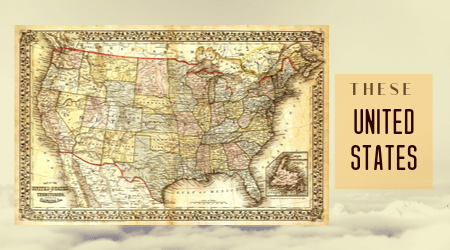-
U.S. States
- Alabama: The Heart of Dixie – Lesson
- Alaska: The Last Frontier – Lesson
- Arizona: The Grand Canyon State – Lesson
- Arkansas: The People State – Lesson
- California: A US State and a Mythical Island – Lesson
- Colorado: Pikes Peak or Bust – Lesson
- Connecticut: War, Trade, and Fundamental Orders – Lesson
- Delaware: A Little State with a Big History – Lesson
- Florida: A Contested Land – Lesson
- Georgia: A Refuge for Debtors and the Poor – Lesson
- Hawaii: A Land of Volcanoes – Lesson
- Idaho: The Gem of the Mountains – Lesson
- Illinois: The Land of the Illini – Lesson
- Indiana: Land of the Indians – Lesson
- Iowa: From Conflict to Corn Belt – Lesson
- Kansas: On the Trail West – Lesson
- Kentucky: Through the Cumberland Gap – Lesson
- Louisiana: The Heart of One of America’s Best Deal – Lesson
- Maine: The Pine Tree State – Lesson
- Maryland: A New Start for Religious Freedom – Lesson
- Massachusetts: The Bay State – Lesson
- Michigan: Water Winter Wonderland – Lesson
- Minnesota: Land of 10,000 Lakes – Lesson
- Mississippi: The Magnolia State – Lesson
- Missouri: The Unwilling Slave State – Lesson
- Montana: The Treasure State – Lesson
- Nebraska: The Cornhusker State – Lesson
- Nebraska: The Cornhusker State – Quiz
- Nevada: The Silver State – Lesson
- Nevada: The Silver State – Quiz
-
U.S. State Capitals
California: A US State and a Mythical Island – Lesson
This state was thought to be a legendary place.
California, the Golden State, was the 31st state to be added to the Union. It is the third-largest, after Alaska and Texas, and has a rich history in Native American life, Spanish ministry, and gold mining.
Because of the differing terrains, many Native American tribes made their homes here but rarely saw each other. There were as many as 135 distinct dialects spoken locally by the time the Europeans made their way into the area; tribes included the Karok, Maidu, Cahuilleno, Mojave, Yokuts, Pomo, Paiute, and Madoc.
It was believed by European settlers that the state was an island, and early mapmakers began labeling it “California,” which is the name of a mythical island in the book Las Sergas de Esplandian (The Adventures of Esplandian). This was only one book in a series of Spanish romance stories — the story centered around Queen Califa, who ruled California. The island in the tale was populated with only female warriors who brandished gold weapons. So, when Spanish conquistador (explorer and conqueror) Herman Cortez arrived in the area in 1536, he thought he had found the legendary island – and that is how the state got its name.
In 1602, Sebastian Vizcaino, another Spanish explorer, sailed to the southern coast of California and was responsible for naming a few cities, including San Diego, Santa Barbara, Santa Catalina Island, and Monterey. In 1769, the Franciscan friar Junipero Serra established the first mission at San Diego. His goal was to convert the local indigenous tribes to Christianity. There were eventually 21 missions established by the padres.
 California eventually became part of Mexico, but Americans began moving into the area. Due to territorial disputes, the United States declared war on Mexico. Eventually, the U.S. won the war and in January 1847 the Treaty of Guadalupe Hidalgo was signed, making California a part of the U.S.
California eventually became part of Mexico, but Americans began moving into the area. Due to territorial disputes, the United States declared war on Mexico. Eventually, the U.S. won the war and in January 1847 the Treaty of Guadalupe Hidalgo was signed, making California a part of the U.S.
For the next several years, the area saw the arrival of gold seekers who moved to try their luck mining for the precious metal during the California Gold Rush. The region officially became a state on September 9, 1850, a process hastened by the riches found there.
During the Civil War, the state sided with the North.
Interesting Facts
- The world’s largest tree, General Sherman, is in Sequoia National Park.
- More turkeys are raised here than in any other state in the U.S.
- The state’s motto is “Eureka!” which means “I have found it!” It alludes to the discovery of gold in the Sierra Nevada.